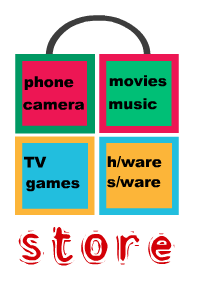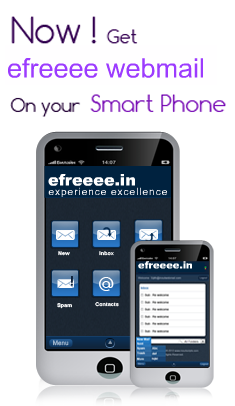freeee.in
experience excellence

how to communicate with your employer
Please review these guidelines for job submissions and correspondence with employers in job and internship searches. Employers will usually make their interviewing decisions based on the strength of your resume and cover letter. Follow-up thank-you notes can add the final touch after a positive interview.
- Communicating with Employers
- Cover Letters
- Reference Lists
- Thank–You Notes
- Email Signature
---------------------------------------------------------
COMMUNICATION WITH EMPLOYERS
When you are looking for a job, it is wise to follow professional guidelines for communicating with employers. Communicating with employers’ calls for a more formal communication style than talking with friends and family. Review these standards to ensure that employers will view your message favorably.
Phone Etiquette
Employers frequently request that you call them to determine your interest and initiative. When you call, you may get a voicemail message. Be prepared with a script to use in response to a voicemail message. The following is an example of a voicemail response:
Give your name and relevant background info:
Hello [person’s name]. This is Andrew.
Give purpose of call:
I am calling to schedule an information interview at your convenience.
Close the message:
Please call me back at (xxx) xxx-5555 (say the phone number slowly, or say it twice). Again, this is Andrew calling to arrange a time to meet for an information interview. Thank you.
Note: Be certain that the voicemail message employers hear on your phone sounds professional.
FAX Etiquette
Occasionally an employer requests a faxed response. Always include a cover sheet when faxing a resume. It determines who gets the fax and how it is interpreted. To create a useful cover sheet:
- Include your name, phone number, fax number, and email address.
- List the recipient’s name. Many businesses have fax machines in separate locations.
- Always complete the “number of pages sent” section so that recipients will know whether they have received all the sheets.
Email Etiquette
Email messages can be cover letters, thank-you notes, or other types of formal correspondence. Compose the email as a business letter – in a well-organized fashion, using proper grammar, capitalization, punctuation, and spelling. Divide the email into two to four brief paragraphs, and be succinct. Ideally, the entire message should fit on a single screen (i.e., not require the reader to scroll down).
When sending a resume to an employer, always include an email message. Your message is the “cover letter”.
COVER LETTERS
Are cover letters necessary?
A cover letter demonstrates to an employer how your experience qualifies you for a particular position. It also serves as an example of your writing skills. In most cases, a cover letter should accompany a resume.
What is the recommended way to send a cover letter?
Use the method requested by the employer. If none is specified, you may:
- send an email, with the cover letter in the message section and your resume as an attachment, or with both your cover letter and resume as attachments
- insert a cover letter in the job application section of an employer’s website or through a job search site; or
- mail a paper copy of your cover letter and resume.
REFERENCE LISTS
Prepare a list of references as you start your job search in order to be ready for employer requests. Employers usually contact references at the end of a search, after they have reduced the applicant pool to a very small number. References can be the final factor in securing a job offer. Here are some reference list guidelines.
Choose appropriately. List three or four professional references, who can speak about the quality of your work, such as professors, supervisors, or co-workers. Do not list personal references unless they are specifically requested.
Be selective. Choose people who respect you and your work and will be positive in their evaluation of you. Keep in mind that you will need to identify and cultivate new references in order to update your list on an ongoing basis.
Obtain permission. Before listing names and contact information, seek permission from the individuals you want to list as references. Give your references a copy of your resume and let them know when they might be contacted.
Show appreciation. Send your references a thank-you note or letter. Let them know the outcome of your job search and continue to stay in touch with them.
THANK YOU NOTES
Sending a thank-you note to each person who assists with your job search is a professional courtesy as well as a wise career move. A thank-you note can reinforce a positive impression you have made during a networking event, information interview, career fair, or job interview. By thanking contacts and employer representatives, you are building your professional network.
Be timely. Send a thank-you message within 24 hours of a meeting or interview. It is important to acknowledge the career assistance you receive from all sources. You especially want to show a job interviewer that you are a serious candidate with excellent follow-up skills before a hiring decision is made.
Handwrite or email? Take your cue from your previous communications with the employment contact. Recruiters generally respond favorably to a brief email thank-you note. Thank-you messages via text are not recommended.
Be brief. Your main goal is to express gratitude for your contact’s time and personal attention. If you have interviewed for a job or internship, you want to reiterate your interest in the position. A short message is best.
Be flawless. Check your spelling and grammar. Ensure that you have the contact’s name and title correct. If writing an email, print and preview the email before sending it.
E-MAIL SIGNATURE
When you communicate by email with an employer, you should have a personalized “signature” that automatically appears at the end of the message. This prevents you from having to type it each time you send an email.
A typical “signature” can look something like this:
Andrew Peterson
<Complete address>
<City, State, ZIP code>
Phone: <phone number>
<Link to your LinkedIn Profile>





